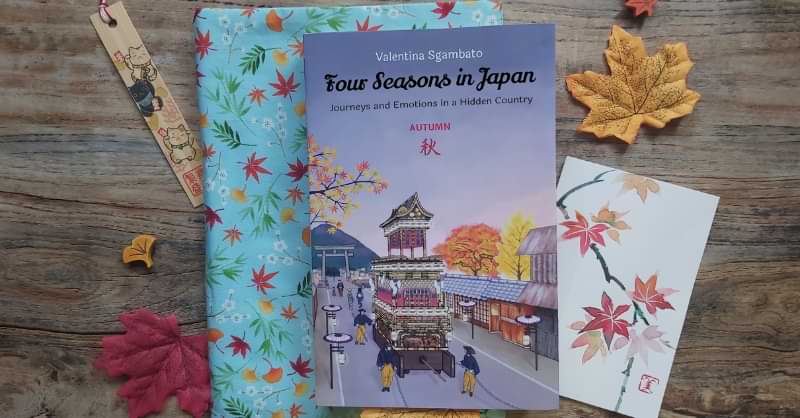Seasons of Japan
Explore nature, learn the traditions and taste delicious foods offered by the seasons of Japan!
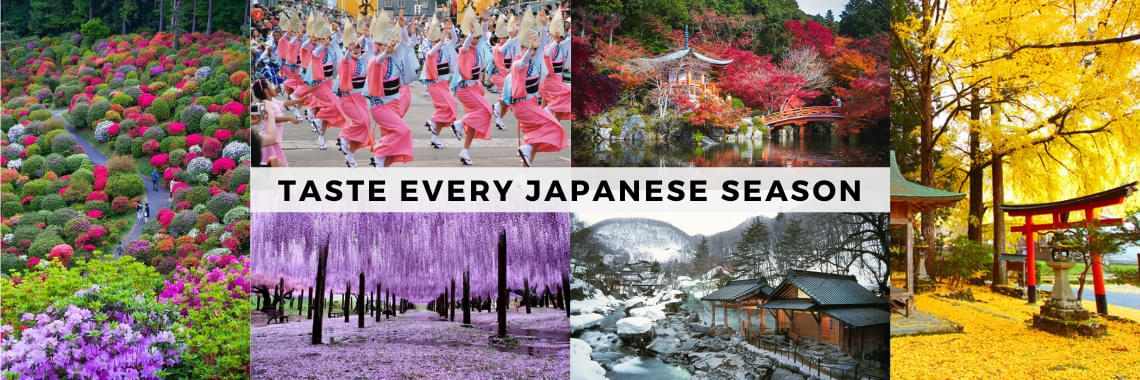
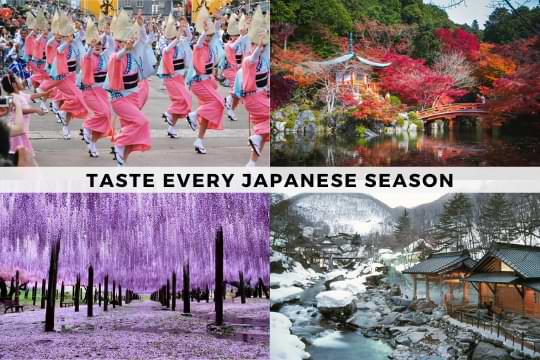
Japanese people lifestyle is strictly connected to nature, and season alternation is always greeted with joy. Join Onigiro looking for every season’s colors in this amazing country.
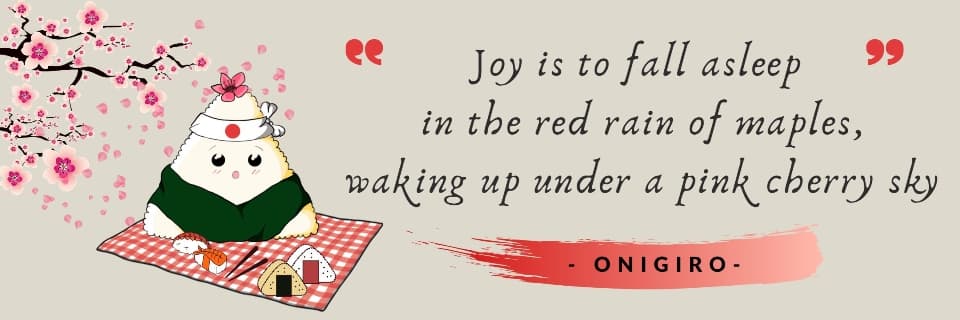
While planning a travel in Japan, you necessarily have to choose a season, so adding seasonal activities is always a great idea to make your trip unforgettable!
On this page you can take a peek at the main features of each season, or directly explore the ones you love the most. Have a nice trip through the Japanese seasons!
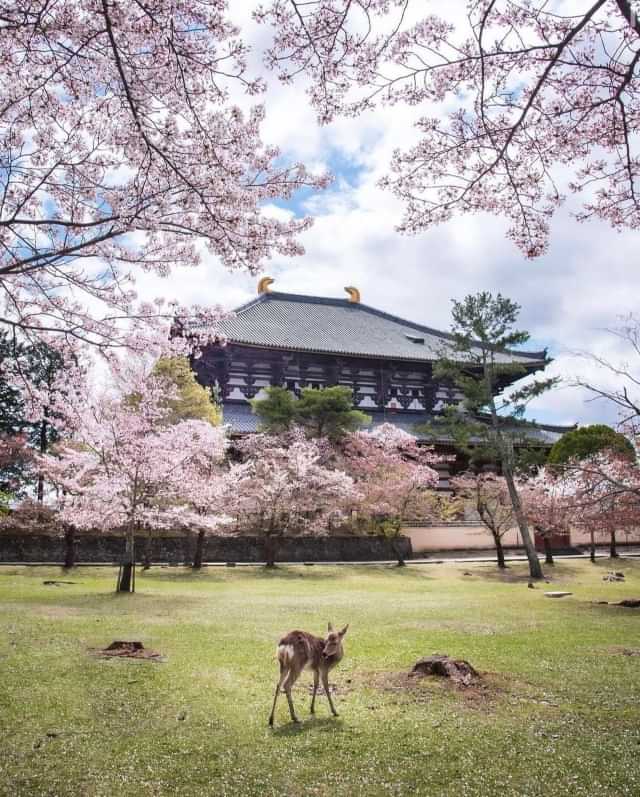
Spring is the most famous Japanese season thanks to the splendid flowering of ornamental cherry trees, the sakura, and many other wonders of nature: between March and April, an impressive number of tourists flow into Japan greedy for photos and breathtaking views!
The Japanese spring is characterized by an uneven climate with temperatures ranging between 4° and 20° C. Although the spring period begins in March, the progress of the blooms varies greatly between northern and southern Japan, with the Hokkaidō region having the last cherry blossoms in early May.
For this reason, if you are interested in the blossoming of cherry trees, wisteria and other wonderful plants, it is ideal to organize your trip by following the forecasts of the blossoming reported in maps like this and which we will provide you in the season detail pages.
Furthermore, in June, in conjunction with the flowering of the hydrangeas, the rainy season begins which brings frequent and abundant rainfall over the whole country.
Spring activities
While many parks and gardens are open until the evening and organize suggestive light-up amidst blooms and age-old wisteria, between April and May the bike tours between rice paddies filled with water and tea fields are also highly recommended in the countryside.
In spring, the Golden Week is Japan’s longest holiday season running from April 29 to May 5, with parks being stormed by the Japanese intent on setting up picnics in a rain of cherry petals.
In this week of peak season, trains and hotels are often fully booked with prices skyrocketing, so it’s better to plan every aspect of your trip in advance.
Other important spring events are linked to the rice transplant festivals, such as the Takayama San’nō Matsuri, with rituals to wish for optimal growth of the crop during the summer.
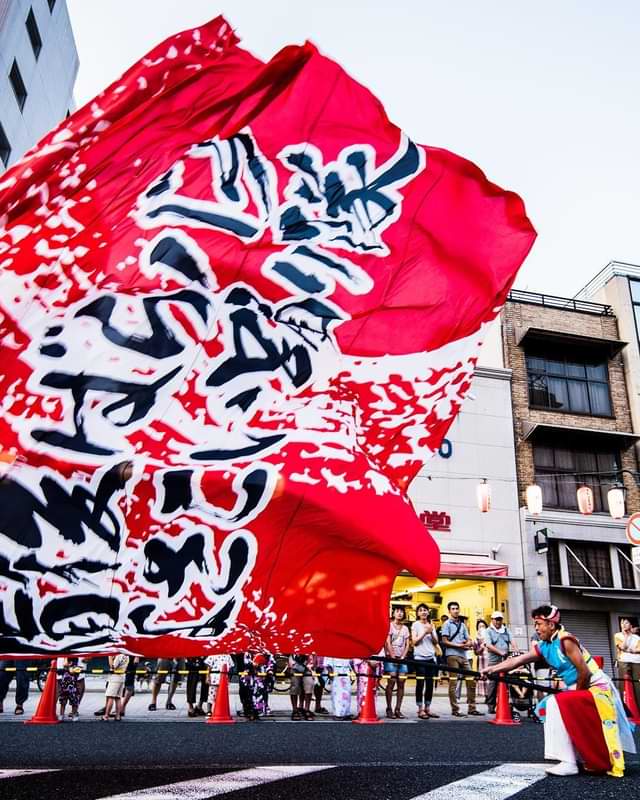
Summer is the season in which Japan hosts the largest number of tourists from all over the world, thanks to the summer holidays and, above all, the beautiful festivals that take place between the end of July and the second half of August!
The humid heat from which it is characterized will remain impressed on many travellers, thanks to the rainy season which lasts until July and the typhoon period at the beginning of September. But despite the high humidity, mosquitoes remain a minor bother!
Moreover, although it might seems a strange advice, always keep a cotton sweatshirt in your bag for temperature changes because inside shops, buses and trains the air conditioning is set to ultra-high!
Summer activities
Between July and August, Japan is a riot of traditional festivities taking place mostly on weekends, including traditional street dance and performance shows, daytime and evening float parades and unforgettable fireworks shows.
This succession of celebrations culminates with the magnificent celebrations of Obon, the main Buddhist festival of mid-August in which the ancestors are remembered, an opportunity for the Japanese to return to their families in the countryside.
And during all these holidays, the streets are filled with stalls serving delicious street food, to be eaten by partying Japanese who parade in their yukata under the festive lanterns.
To escape the heat, you can take walks in the woods and traditional paths, among ancient trees and secret temples, all accompanied by the deafening call of Japanese cicadas. Additionally, mountains such as Fuji-san can only be climbed to the top between July and August.
Moreover, thanks to the crystal clear rivers, summer activities such as rafting and kayaking are increasingly popular unlike the beaches which, for cultural reasons, are not very popular among the Japanese despite some of them, mainly in Okinawa, are being stormed by foreign tourism.
Finally, to escape the summer heat, cold dishes such as zaru soba and the playful nagashi sōmen will cheer you up during meals while, for an icy break, the kakigōri covered in summer fruit are a must-try.
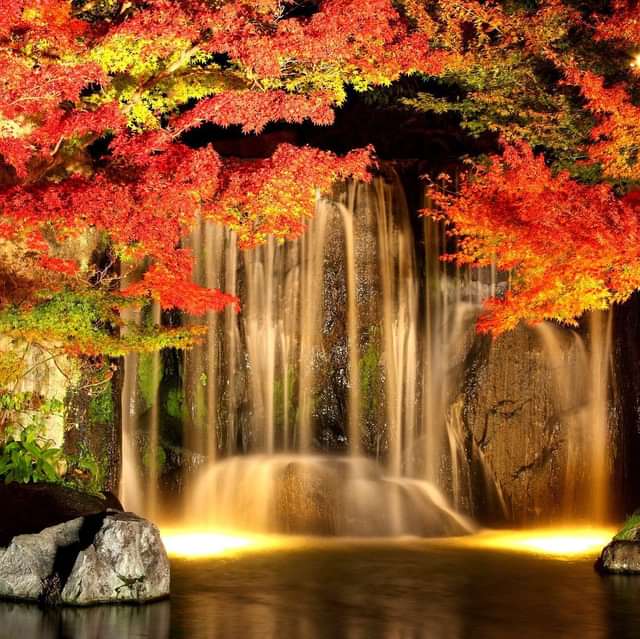
Thanks to mild temperatures and a dry climate, autumn is a great time to visit Japan, also due to the lower number of foreign tourists.
In most of the country, the pleasant autumn coolness begins to be felt from mid-October, when mild days alternate with cool nights, favoring the appearance of the first autumn colors.
Moreover, while in the south the high temperatures prolong these autumn colors until early December, in Hokkaidō temperatures already drop below zero and the first snowfalls occur.
Autumn activities
Between the end of September and the second half of October, festivals are held to pray for an abundant harvest of rice, which is essential for the daily Japanese diet.
Furthermore, an all-Japanese celebration is tsukimi, the contemplation of the autumn moon, celebrated throughout Japan with themed events and foods such as tsukimi udon and tsukimi dango.
Staying on food, autumn is full of seasonal ingredients such as pumpkins and mushrooms, very common in tenpura or in soups, and also chestnuts, sweet potatoes and shinmai, the “new” rice.
In November, the hues of the foliage color Japanese woods and parks, especially with the red maple trees and golden ginkgos that stand out in the long avenues. This is the month of momiji-gari, hunting for the red leaves of maple trees, an activity loved by all Japanese who flock to parks that are open and lit up until late.
Finally, already from the end of November it is possible to come across the first winter illuminations, such as in the wonderful Nabana-no-Sato floral park whose layout changes every year and is made up of around 6 million LED lights.
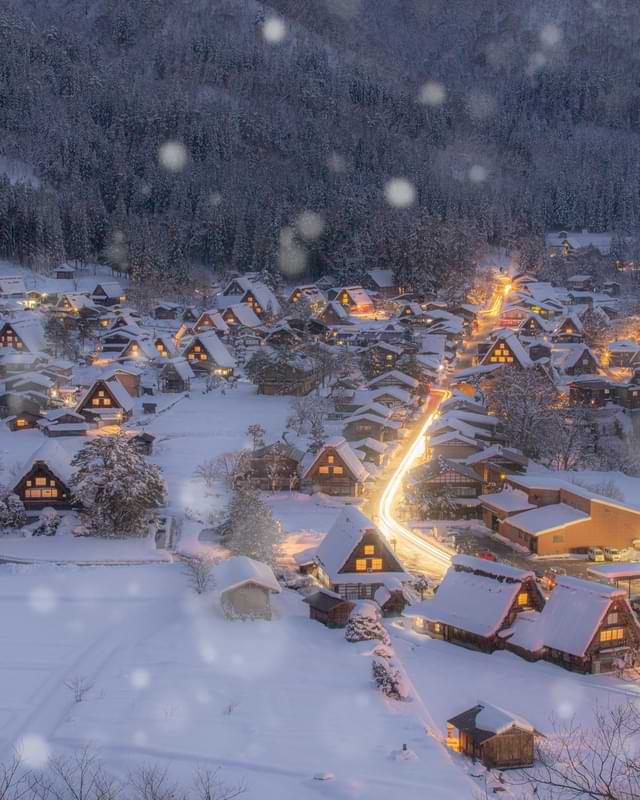
According to official statistics, lately winter has been the season when Japan receives the least tourists. But when the powdery snow covers the sinuous mountains or the roofs of the towns, the landscapes that this season offers are unforgettable.
The first glimpses of snow appear on the hills of the central regions in mid-January while in the north, between Tōhoku and Hokkaidō, the snow already appears in December. In the south, on the other hand, temperatures remain much milder throughout the winter and snowfalls are rare.
This cold climate can be remedied with the typical foods of this cold season, namely nabemono, shabu-shabu, sukiyaki and, above all, the hot rāmen: the Japanese are obsessed with this dish, and every city has its own variation, from Fukuoka’s tonkotsu rāmen to Sapporo’s miso rāmen.
Finally, mainly in the coastal areas of the San’in area, matsuba crab fishing is open in the winter, a seasonal delicacy that is far from cheap!
Winter activities
In December, the big cities are filled with wonderful illuminations that embellish the avenues and squares. Others, on the other hand, are the protagonists of huge displays in theme parks and can last even until the end of the cold season.
On the evening of New Year’s Eve, fireworks are an activity limited to amusement parks as, in Japan, the New Year is celebrated at Buddhist temples where the great bell is rung 108 times, a custom to purify the body from that amount of human material desires.
The first week of the year, the country is abuzz with Hatsumōde, the first visit of the year to temples and shrines. During this week, millions of Japanese travel to their hometowns to pray for the health of their loved ones and make new resolutions for the year.
Between the end of December and March, numerous ski resorts open in the mountain areas, including the very famous ones in Nagano and Niseko, attracting international tourism who are passionate about skiing and snowboarding.
In addition to winter sports, another popular activity this season, mainly by the Japanese themselves, is sotoyu-meguri in hot spring towns: these towns, such as Kinosaki Onsen for example, offer the possibility to enter in all the various historic public baths at very low prices.
Last, but not least, are the snow festivals, held mainly in February and reaching the maximum attendance in the Sapporo snow festival.


